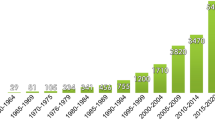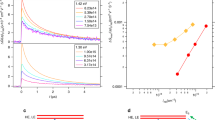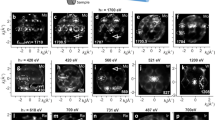Abstract
THE available data for the band systems of diatomic halides of Group IV(b) elements are fragmentary and give conflicting indications of the nature of the ground states, for which either 2 or 2II is theoretically possible, and the latter has been regarded as more probable1. We have recently made observations of band systems of GeCl and GeBr, which seem to clarify the situation considerably.
This is a preview of subscription content, access via your institution
Access options
Subscribe to this journal
Receive 51 print issues and online access
$199.00 per year
only $3.90 per issue
Buy this article
- Purchase on Springer Link
- Instant access to full article PDF
Prices may be subject to local taxes which are calculated during checkout
Similar content being viewed by others
References
R. K. Asundi and R. Samuel, Proc. Ind. Acad. Sci., 3, 346 (1936).
W. Jevons, Proc. Phys. Soc., 48, 563 (1936).
W. Jevons, Proc. Roy. Soc., A, 110, 365 (1926).
W. F. C. Ferguson, Phys. Rev., 32, 607 (1929).
E. Miescher, Helv. Phys. Acta, 8, 587 (1935).
G. D. Rochester, Proc. Roy. Soc., A, 153, 407 (1936).
F. Morgan, Phys. Rev., 49, 47 (1936).
Author information
Authors and Affiliations
Rights and permissions
About this article
Cite this article
BASHFORD, L., BRISCOE, H. & JEVONS, W. Ultra-violet Band Systems of the Emitters GeCl and GeBr. Nature 138, 883–884 (1936). https://doi.org/10.1038/138883b0
Issue Date:
DOI: https://doi.org/10.1038/138883b0
This article is cited by
-
On the emission spectrum of CCl4
Proceedings of the Indian Academy of Sciences - Section A (1937)
-
On the emission spectrum of SiBr4
Proceedings of the Indian Academy of Sciences - Section A (1937)
Comments
By submitting a comment you agree to abide by our Terms and Community Guidelines. If you find something abusive or that does not comply with our terms or guidelines please flag it as inappropriate.



